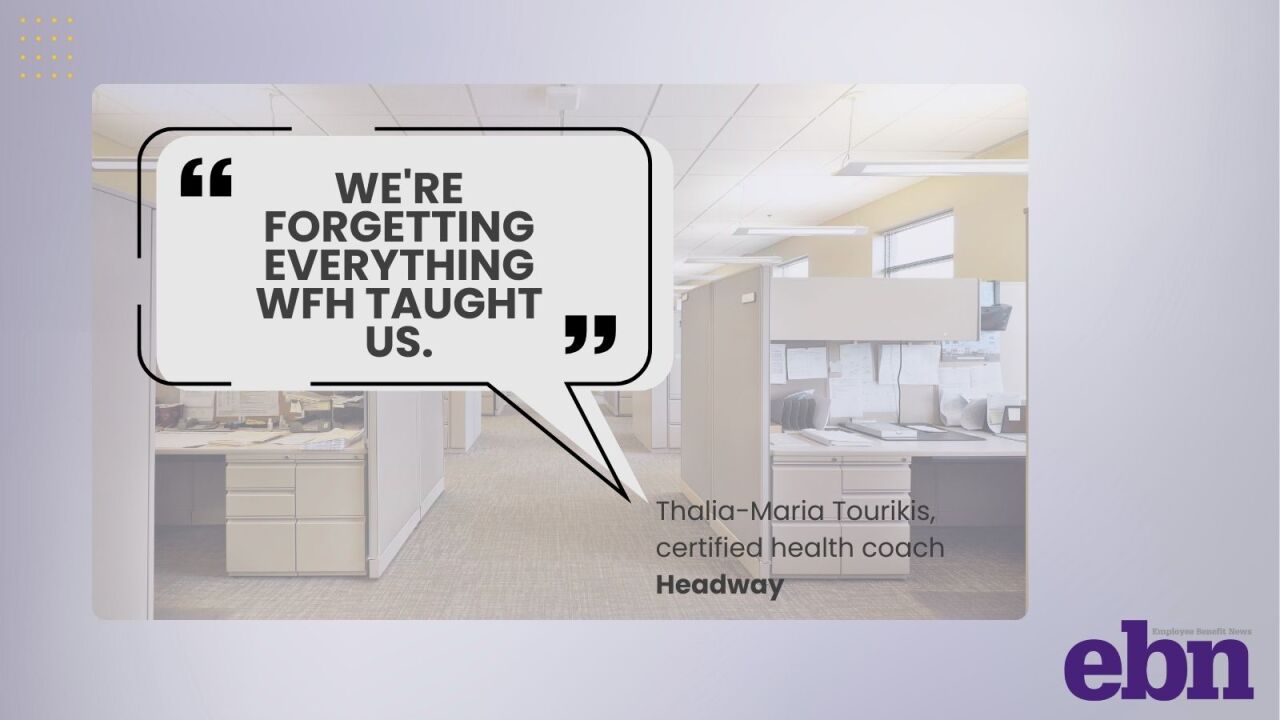As we look to 2023, the only thing that feels certain is economic uncertainty. Families and individuals are increasingly having to choose between near-term savings and expenses and future
"How to prioritize saving for, say, a child's college education against other goals like emergency savings or
In her role at the financial services firm, Creonte and her team partner with state governments to facilitate tax-advantaged savings programs for constituents. These include 529 plans to help families save for college, Achieving a Better Life Experience (ABLE) programs to support people with disabilities, and IRA programs to offer support to small businesses that don't facilitate 401(k) programs.
Read more:
"There's a long investment horizon for these types of products," Creonte says. "If you're doing everyday market watching, that can be really disconcerting. But we all know that the market eventually recovers, and these programs can help savers stay the course."
Creonte recently spoke with EBN to break down the value these often-overlooked programs can create, how small savings efforts can lead to big results, and how local organizations, governments and even employers can help turn up the volume on messaging.
Entering this state of confusing economic circumstances, how are people approaching their finances and savings plans?

All three of our products generally invest in mutual funds in the market, and when there's significant market volatility, that can be troubling for people. Generally what we've seen is that people who put their savings on autopilot or a set-it-and-forget it schedule where they're investing regularly through payroll programs through their employers, tend to stay very stable. It's the participants who do more lump-sum contributions where we're seeing more hesitation to put money into a volatile market.
Read more:
As more folks may be concerned with their near-term financial stability, how can you explain the impact of prioritizing these long-term investments?
For the millions of families who aspire to send their kids to college, it's really about understanding what that will look like from a debt perspective. The differential in terms of slow and steady saving in a 529 versus not saving and taking it all in debt via student loans is really dramatic. Plus, most states offer a tax benefit for money going into those plans, and then when they're withdrawn, as long as the money is used for
As folks are building those savings, what's the average contribution?
So far in 2022, the median initial contribution to open a 529 account is $200, and the median scheduled payment is $100, which is true for both monthly and quarterly contribution schedules. So opening a 529 is achievable for many. And eventually what we see as an average balance when people start taking distributions is about $35,000. So families are really using this to offset the cost of college.
And how does this kind of program play with retirement savings plans? What should people's approach be?
Ascensus is a leading
Read more:
Relatedly, the ABLE plans that Ascensus works to create help support people with disabilities — how do these plans compare and contrast with a 529?
They're structured similarly. The ABLE act was passed in 2014 to create the ability for someone who's disabled to save money in this financial product called an ABLE account and not have their federal benefits impacted. Until that point, if you had more than $2,000 in assets, you started to become unqualified for benefit programs. So when you think of the millions of people who go to work every day and have disabilities and really rely on those benefits, they were in a really bad place because they just couldn't accumulate any assets.
Now, if you have money in an ABLE account, there's a cap on it but you can save significantly more. It's really opened the door for families or individuals with disabilities to be able to set aside money for disability-related expenses, which is really anything to help facilitate a better life with someone with a disability — it could be as big as a van with accommodations to help with transportations, or even individual Uber rides for someone who's unable to walk to their job. We've seen a great uptake, but since it's such a young program, they're really just getting off the ground.
What's the hurdle to getting more people aware of this kind of program?
We have a lot of disability-related groups at the federal level, and those are really key conduits for information. But we're still definitely trying to figure it out — even when I talk to families who have children with disabilities, often people haven't heard of these plans. So awareness is a priority.






